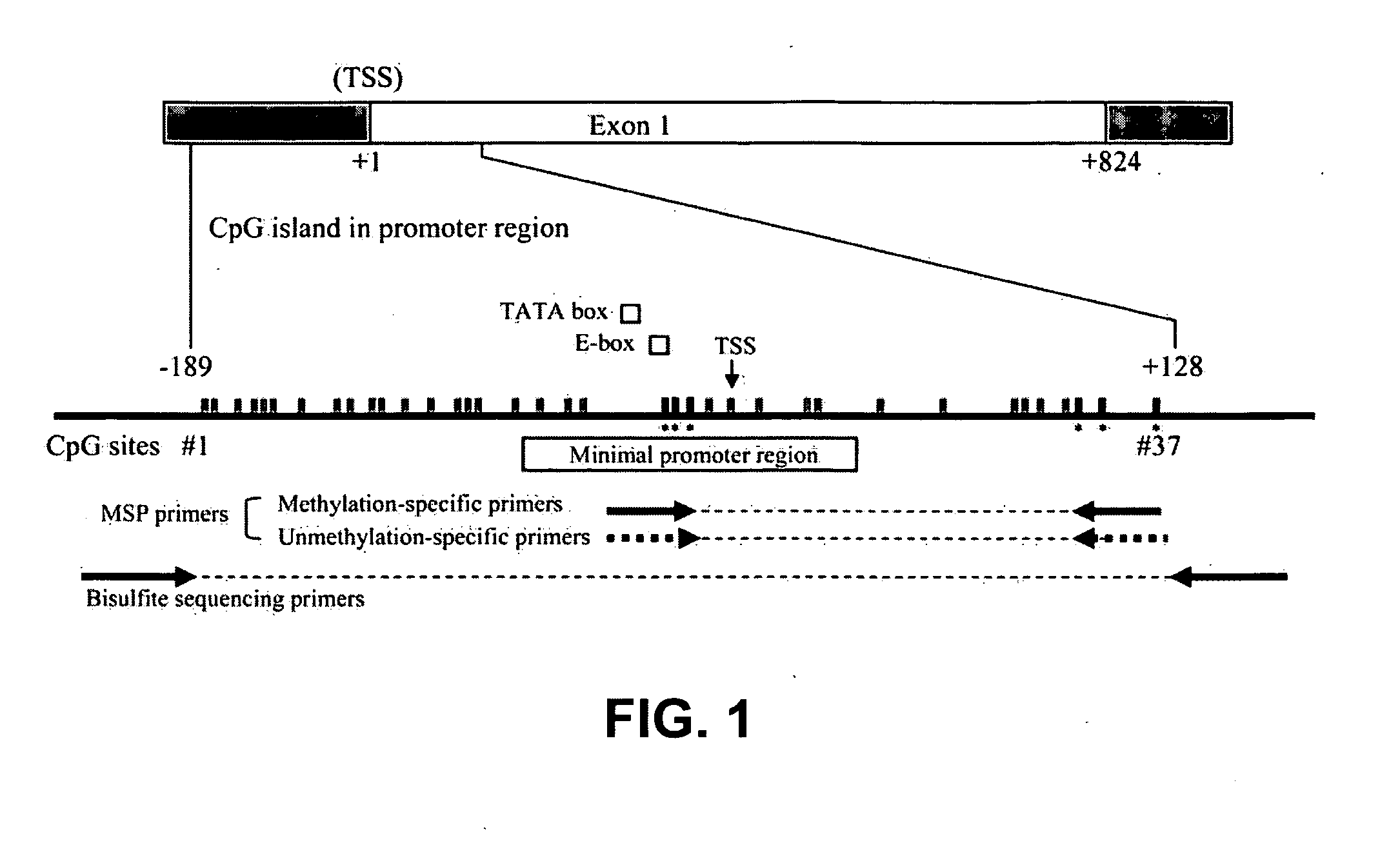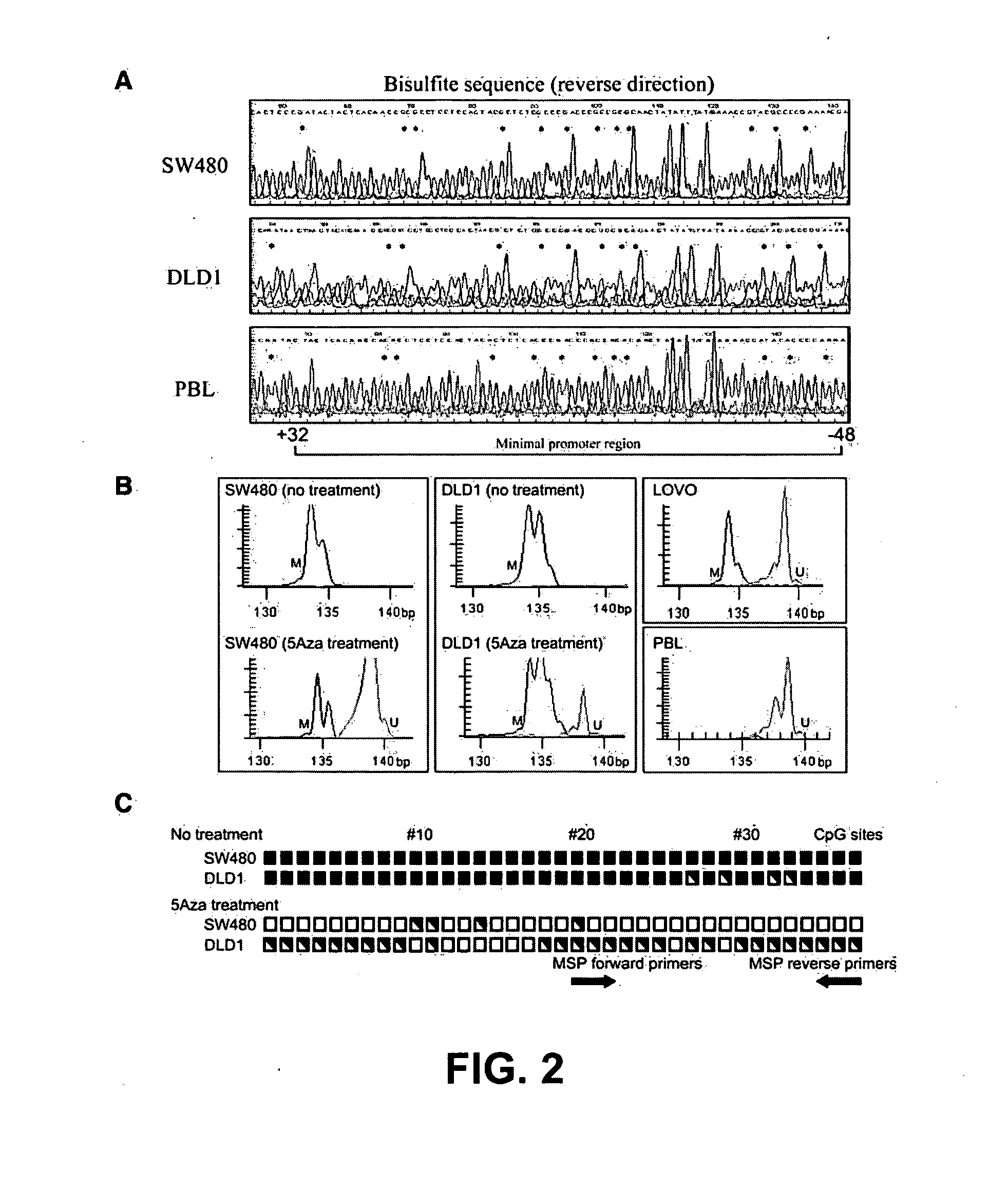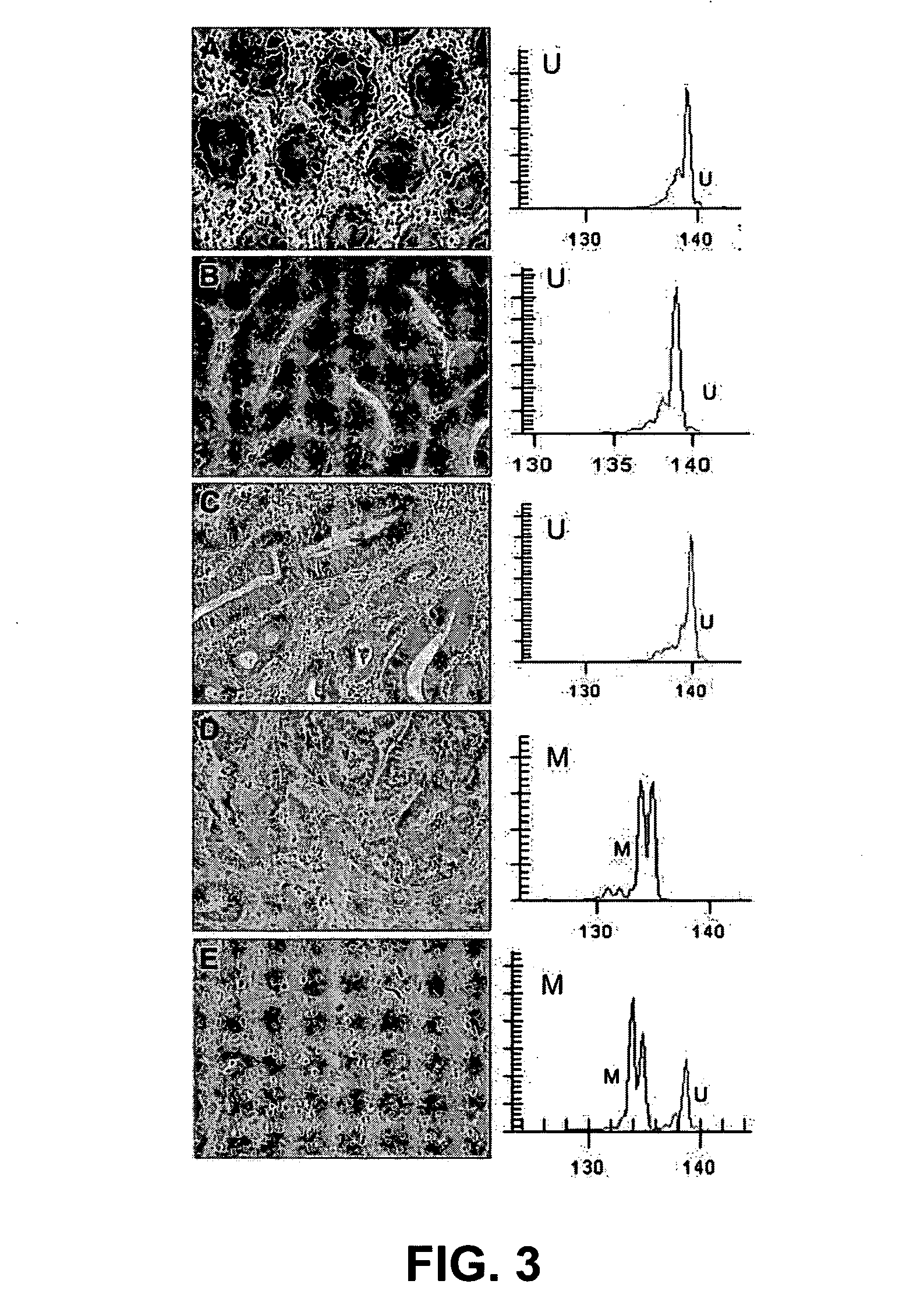Use of ID4 for diagnosis and treatment of cancer
- Summary
- Abstract
- Description
- Claims
- Application Information
AI Technical Summary
Benefits of technology
Problems solved by technology
Method used
Image
Examples
example 1
Epigenetic Inactivation of Id4 in Colorectal Carcinomas Correlates with Poor Differentiation and Unfavorable Prognosis
[0071] We hypothesized that ID4 gene may be expressed in normal colon epithelium and have a putative tumor suppressive role in CRC, contrary to other ID members. To examine this hypothesis, we assessed the methylation status of CRCs. We found that ID4 gene transcription is silenced during CRC development and that hypermethylation of the ID4 promoter region is one of the main mechanisms of inactivation.
Materials and Methods
[0072] Cell Lines. Three CRC cell lines SW480, DLD1, and LOVO (American Type Culture Collection, Manassas, Va.) were analyzed in this study. Genomic DNA was extracted from cells as described previously (33). Total RNA was extracted with TRI Reagent (Molecular Research Center, Inc., Cincinnati, Ohio) according to the manufacturer's protocol. For ID4 expression restoration study, SW480 and DLD1 were treated with DNA demethylation agent 5-aza-cytid...
example ii
Aberrant Hypermethylation of ID4 Gene Promoter Region Increases Risk of Lymph Node Metastasis in T1 Breast Cancer
[0140] We hypothesized that additional information about genetic alteration of cancer cells could be helpful for a prediction of nodal metastasis, and aimed to find new genetic markers of nodal metastasis. As advanced primary cancers have more lymphovascular invasion than early stage cancers, which directly causes metastasis and may mask the impacts of the genetic alterations, we considered that early cancers are more suitable for a study of assaying a new genetic marker that influence on regional lymph node metastasis. In addition, because genetic abnormalities are accumulated during cancer progression, we considered that early cancers would have simple correlations between genetic alterations and biological behavior.
[0141] We hypothesized that ID4 may have a putative tumor suppressive role in early stages of breast cancer progression, and epigenetic inactivation of ID...
PUM
| Property | Measurement | Unit |
|---|---|---|
| Fraction | aaaaa | aaaaa |
| Fraction | aaaaa | aaaaa |
| Fraction | aaaaa | aaaaa |
Abstract
Description
Claims
Application Information
 Login to View More
Login to View More - R&D
- Intellectual Property
- Life Sciences
- Materials
- Tech Scout
- Unparalleled Data Quality
- Higher Quality Content
- 60% Fewer Hallucinations
Browse by: Latest US Patents, China's latest patents, Technical Efficacy Thesaurus, Application Domain, Technology Topic, Popular Technical Reports.
© 2025 PatSnap. All rights reserved.Legal|Privacy policy|Modern Slavery Act Transparency Statement|Sitemap|About US| Contact US: help@patsnap.com



